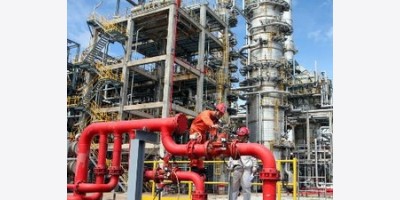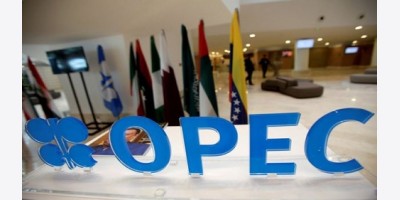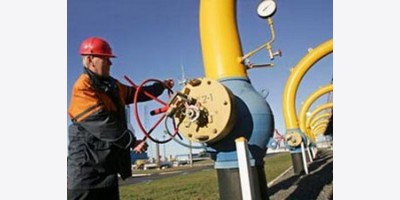There was great hope in early 2012 that oil and gas revenues, which had rebounded fairly quickly after the overthrow of Moammar Gadhafi, would allow Libya to finance its own reconstruction and transition to democracy. Beneath this optimism, however, were troubling indications of the problems that were to beset Libya’s oil industry over the coming months.
On April 23, 2012, protesters occupied the Benghazi headquarters of the Arabian Gulf Oil Company, demanding greater transparency over oil revenues and more jobs for the city’s residents. While this protest ended two weeks later with little impact on oil production, the grievances that fueled it continue to drive the protests, strikes and violence that are causing dramatic declines in Libya’s oil production and associated revenues. Instead of facilitating a democratic transition, the oil industry has been plagued by ongoing conflict that has come to reflect and embody many other unresolved issues in postrevolution Libya.
In the wake of the 2011 uprising, Libya was left with an oil industry that enabled and exhibited many of the negative effects of a rentier economy. Inefficiency, patronage and political influence were the norm, and decades of oil dependence had inhibited the development of a productive private sector. In 2010, the oil sector accounted for 91 percent of all government revenues and more than 70 percent of GDP. The former regime had unevenly distributed the wealth generated from oil sales: Major producing regions in the east and south failed to benefit from the oil wealth and often suffered from high unemployment. This reflected the social and political marginalization these regions suffered under the Gadhafi regime.
In the early months of 2012, the oil sector’s failure to correct some of these basic inequalities in the allocation of the country’s resource wealth – the same reason it was successful in rebounding rapidly – would also prove to be its undoing. As oil production rapidly expanded, communities adjacent to oil facilities in Libya’s east and south continued to suffer from high unemployment and poverty. Local workers began demanding better pay and benefits, more jobs for their communities and the replacement of Gadhafi-era managers.
These grievances overlapped with a larger narrative of marginalization and exclusion that many in the east and south held regarding the national government in Tripoli. As communities across Libya asserted their autonomy in the wake of the uprising, oil and gas infrastructure presented a convenient and potent target for anger and frustration at the failure of Libya’s national government to address their needs and demands.
Nowhere were these dynamics more apparent than in the country’s eastern region of Cyrenaica. Here, frustration with the lack of transparency regarding oil revenues was subsumed in the larger debate over federalism in post-Gadhafi Libya.
In July 2012, groups seeking increased autonomy for Cyrenaica forced the three major oil export terminals in eastern Libya to shut down to protest elections for the National Council, which they claimed would disenfranchise the east. In response to the increasing unrest threatening the oil sector, Tripoli expanded the Petroleum Facilities Guards to absorb former militias and provide jobs for regions that were agitating for change.
The PFG quickly became more of a liability than an asset. PFG units clashed with local militias over control of specific oil and gas sites and failed to stop strikes and protests from disrupting supplies, all the while costing the government close to $200 million a year. The PFG also provided a springboard to legitimacy for former militia leader Ibrahim al-Jadran, who used his position as head of the guards in Cyrenaica to engineer a strike and blockade in August 2013 that has closed off the main oil export terminals in the east, cutting Libyan oil sales by 600,000 barrels a day. Jadran has since rebranded himself as a politician and federalist, forming a shadow government in the east and scheming to sell Libya’s oil out from under Tripoli.
Disruptions to Libya’s oil and gas sector have hardly been limited to the east. Conflict over the oil sector has become a proxy for numerous other conflicts that are working themselves out in post-uprising Libya. In November 2012, wounded war veterans blockaded the Zawiya oil refinery, demanding medical care for injuries suffered during the rebellion. This past fall, teachers blockaded the same refinery to call attention to their national strike for better pay. All across Libya, oil installations provided a convenient focal point for local grievances as they ensured a response from Tripoli. In the southwest, Tubu demonstrators have blockaded the large oil fields of Al-Sharara and Al-Fil on numerous occasions to demand jobs and training for local residents who they say are discriminated against.
Tuareg protesters similarly blockaded the same Al-Sharara site to demand that the government issue them ID cards and officially recognize their language. In Libya’s northeast, Amazigh militias have targeted the coastal Mellitah oil and gas facility to protest minority representation in the government, temporarily halting natural gas exports to Italy. In the southeast, ongoing conflict between Tubu and the Zwai tribe has periodically affected oil and gas installations in the region. The pace and intensity of disruptions increased steadily throughout 2013, leading to a precipitous decline in oil production and revenues that has pushed Prime Minister Ali Zeidan’s government to the brink of financial crisis.
To date, Tripoli has dealt with these disruptions on a case-by-case basis, which has done little to address the underlying issues that are driving disruptions to Libya’s oil production. The Zeidan government has relied on informal channels for dispute resolution, often engaging with tribal authorities to placate local demands with promises of jobs and development or by undercutting support for their opponents.
This strategy, if it can be called such, has several major drawbacks for Tripoli. First, it has shown protesters that blockading the flow of oil and gas is an effective way to secure concessions from Tripoli. Second, agreeing to provide jobs and development based on local demands rather than industry needs only adds further inefficiencies and corruption to a troubled oil sector. Government payrolls already support 70 percent of the Libyan workforce and together with other nondevelopment services consumes 77 cents from every dollar of Libya’s oil revenue, leaving few funds for development or investment. Finally, contracting out dispute resolution to local authorities, while effective, accentuates the federal government’s weakness, which encourages further protests and disruptions.
As Zeidan contemplates a more forceful military response to oil blockades in the east, and Jadran’s support has begun to erode among tribal elites in Cyrenaica, it appears that the end may be in sight for the blockades at Libya’s major oil ports for the time being. Even so, many of the deficiencies in Libya’s oil and gas sector that have been driving grievances remain. As Libyans embark on writing a new constitution, groups will again resort to disrupting the flow of oil to press their agenda, whether it is to demand jobs, development, regional autonomy or minority rights.
Oil will continue to divide Libyans as long as the sector remains the sole source of economic growth and fundamental questions about the allocation of revenues and jobs remain undetermined.
Kevin Casey is a senior fellow with the Arctic Institute and blogs about conflict and security in Libya. He was a social scientist with the U.S. Army conducting strategic and operational research on the Middle East and North Africa from 2009 to 2013. This commentary first appeared at Sada, an online journal published by the Carnegie Endowment for International Peace (www.carnegieendowment.org/sada).
Source: Daily Start























